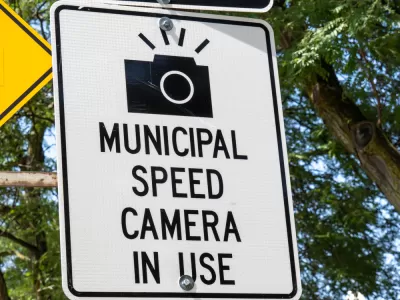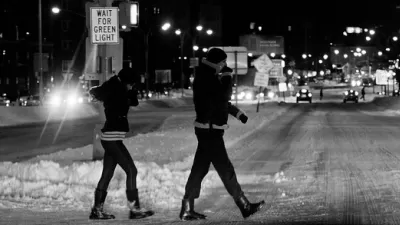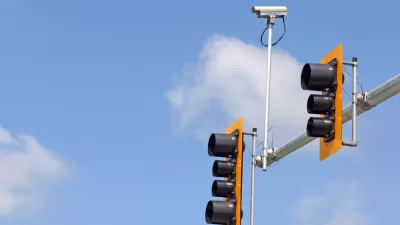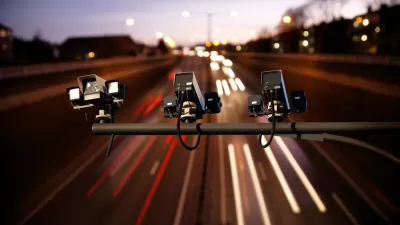File under: not a cash grab.

The New York Department of Transportation (DOT) has crunched the numbers and has the data to prove it: speed cameras reduce unsafe speeds.
Last year, the city of New York was finally allowed by the state to run speed cameras on specific corridors 24 hours a day and seven days a week. The around the clock camera enforcement is controversial with drivers and government watchdogs, but popular with traffic safety advocates.
Now there is evidence that the 24-7 speed cameras have produced safer conditions on the street by drastically reducing the average speeds of drivers.
“The shift to around-the-clock automated enforcement since Aug. 1, 2022 has led to significant reductions in speeding — including 96 percent on Manhattan's Houston Street, 74 percent on North Conduit Boulevard near JFK Airport, and 68 percent on the Bronx's treacherous Bruckner Boulevard,” reports David Meyers, sharing insight into date recent released by DOT.
The data would seem to provide strong evidence that speed cameras are more than just a cash grab—a charge leveled by many speed camera opponents.
New York’s speed cameras became the character of the day on social media recently when famous television show creator David Simon complained about the cameras busting him for speeding.
Meyers again reiterates the case for automated enforcement of speeding in the source article, linked below:
Speeding is deadly, and the chances of being killed by a driver increase with driver speed. Speed was a reported factor in nearly one-third of deadly crashes in the U.S. in 2021, according to the Federal Highway Administration.
The New York City DOT is far from the first agency to see evidence of the safety benefits of speed cameras, of course. Similar data was also published in Ottawa earlier this year.
FULL STORY: Success: Drivers are Slowing Down on Streets with 24/7 Speed Cameras

Alabama: Trump Terminates Settlements for Black Communities Harmed By Raw Sewage
Trump deemed the landmark civil rights agreement “illegal DEI and environmental justice policy.”

Planetizen Federal Action Tracker
A weekly monitor of how Trump’s orders and actions are impacting planners and planning in America.

The 120 Year Old Tiny Home Villages That Sheltered San Francisco’s Earthquake Refugees
More than a century ago, San Francisco mobilized to house thousands of residents displaced by the 1906 earthquake. Could their strategy offer a model for the present?

In Both Crashes and Crime, Public Transportation is Far Safer than Driving
Contrary to popular assumptions, public transportation has far lower crash and crime rates than automobile travel. For safer communities, improve and encourage transit travel.

Report: Zoning Reforms Should Complement Nashville’s Ambitious Transit Plan
Without reform, restrictive zoning codes will limit the impact of the city’s planned transit expansion and could exclude some of the residents who depend on transit the most.

Judge Orders Release of Frozen IRA, IIJA Funding
The decision is a victory for environmental groups who charged that freezing funds for critical infrastructure and disaster response programs caused “real and irreparable harm” to communities.
Urban Design for Planners 1: Software Tools
This six-course series explores essential urban design concepts using open source software and equips planners with the tools they need to participate fully in the urban design process.
Planning for Universal Design
Learn the tools for implementing Universal Design in planning regulations.
Clanton & Associates, Inc.
Jessamine County Fiscal Court
Institute for Housing and Urban Development Studies (IHS)
City of Grandview
Harvard GSD Executive Education
Toledo-Lucas County Plan Commissions
Salt Lake City
NYU Wagner Graduate School of Public Service





























